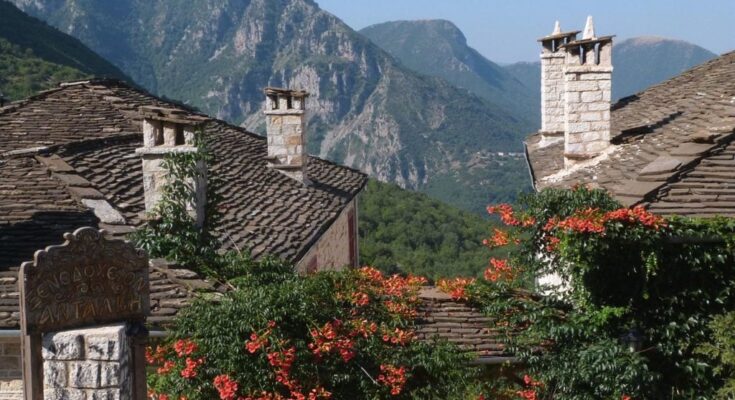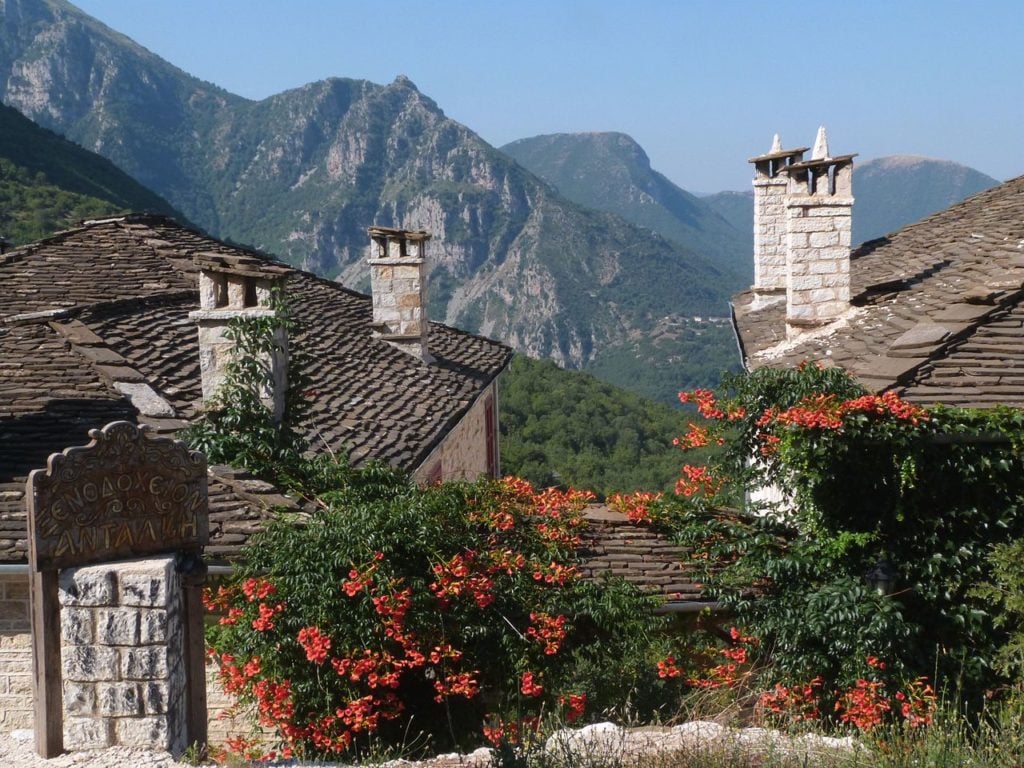
Perched on a mountainside near the end of the spectacular Vikos Gorge, the picturesque village of Papingo actually consists of two villages, Megalo Papingo and Mikro Papingo, or Greater Papingo and Lesser Papingo.
Papingo (Πάπινγκο in Greek) belongs to the municipality of Zagori in Epirus, and is located inside the Vikos–Aoos National Park at an altitude of 900 meters (2,952 feet), at the foot of Astraka, the peak of a mountain called Tymphe.
Vikos Gorge is the largest canyon in Greece and arguably in all of Europe. Ιt is the gorge with the greatest depth to width ratio, according to the Guinness Book of World Records 1997.
The municipality of Zagori is famous for its beautiful villages, but for many, Megalo Papigo is the most beautiful of them all.
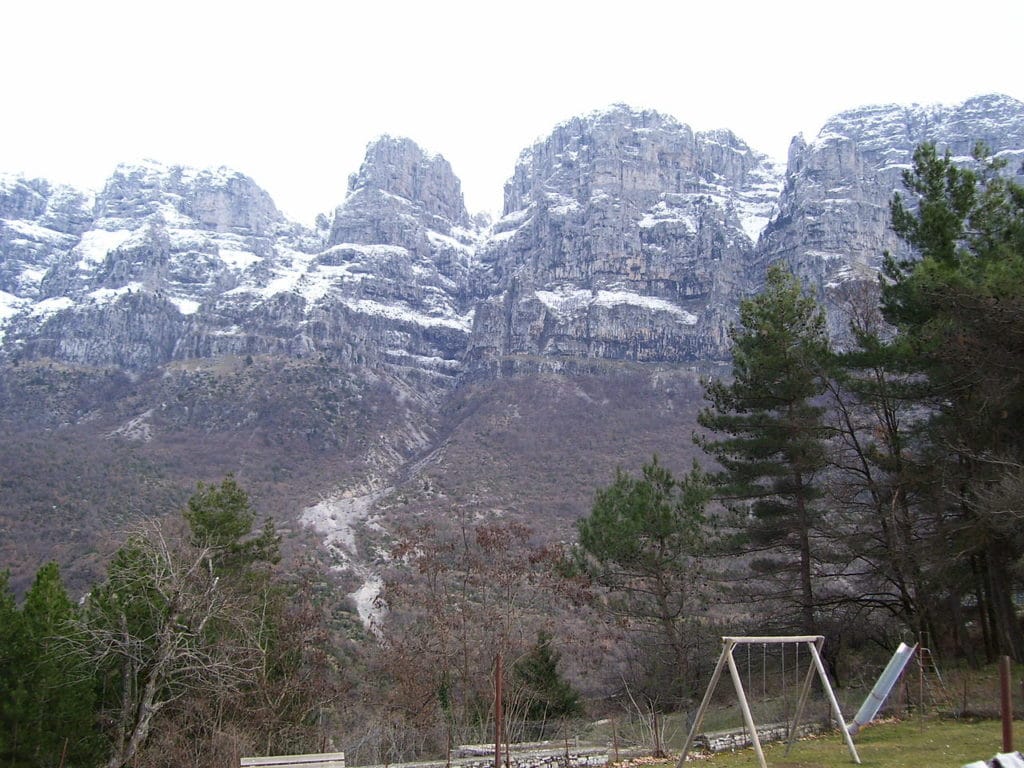
Unique architecture in a magnificent mountain setting
Papingo is 60 km (37 miles) from Ioannina, the capital of Epirus. Next to the gorgeous mountainous landscape, what impresses the visitor is the unique architecture of this region.
Before entering Papingo, one will see the Byzantine-style Agia Paraskevi Monastery, which dates back to the 18th century.
Cobbled streets, stately mansions, beautiful fountains, and old Byzantine churches, all based on the traditional local architecture, lend a very special atmosphere to the village.
Next to the impressive church of Agios Vasilios is the elementary school, the work of Michael Anagnostopoulos, who in 1888 founded the famous Kallineia Schools, five in total, in Great and Lesser Papingo.
Today, the building houses the Anagnostopoulos library. Anagnostopoulos (1837-1906) was the director of Perkins Institution and Massachusetts Asylum for the Blind, located in Boston, Massachusetts, which was founded by his friend, the famous philhellene Samuel Gridley Howe.
The library there contains some rare works.
Megalo Papingo has many hotels, guesthouses, inns, taverns, restaurants and cafes, all with the traditional architecture of the region.
Despite the great amount of tourist development in recent decades, Megalo Papingo retains its identity, and the unique natural landscape around it remains virtually untouched.
The village has incredible views of the towers of Astraka, and the springs of Voidomatis River, the natural swimming pool “Rogovo” on the way to Lesser Papingo and the lodge of the Astraka Mountaineering Association are just some of the natural attractions there.
The traditional local architecture, lush vegetation, the incomparable beauty of the mountains and the wildness of the landscape make it an ideal destination for most travelers.
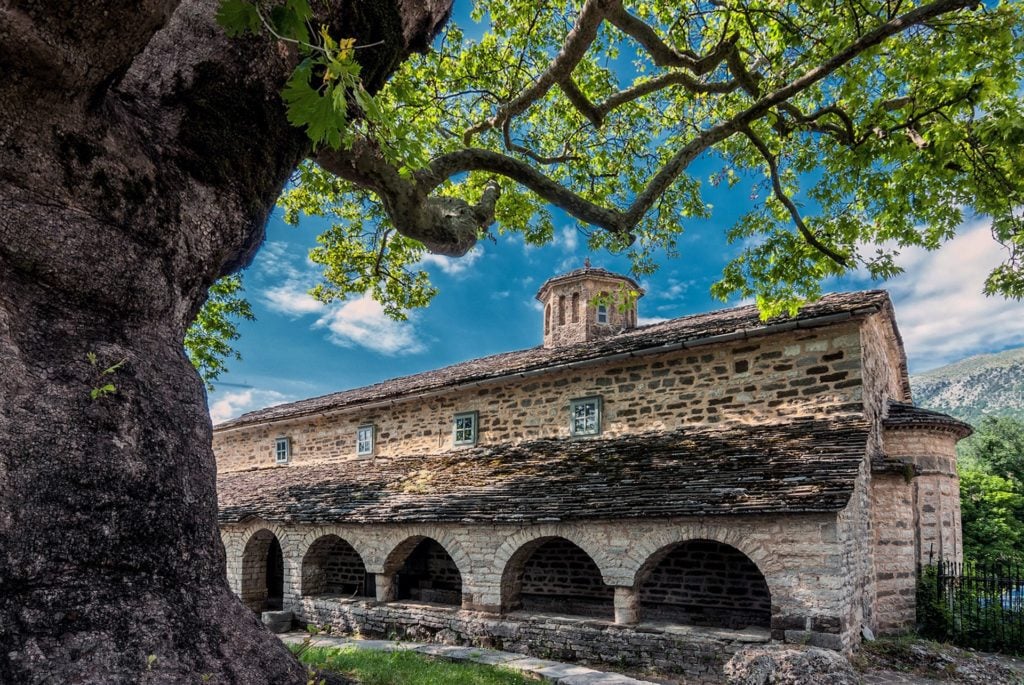
Mikro Papingo
Cobblestone roads, old mansions with folk art frescoes, old stone churches, narrow streets and the rich backdrop of the landscape create a uniquely beautiful scene at Mikro Papigo.
Before arriving at the village you will find small pools and the natural swimming pool called “Rogovo“. Water erosion over the eons has formed round pits that look like small ponds, which the locals call “ovires” along the Rogovo.
At the entrance of the village, next to the Church of the Archangels, is the old school, also the work of Michael Anagnostopoulos, which is also the location of the World Wildlife Fund Information Center, which gives information about the fauna and flora of the region.
The 18th-century church of the Archangels Michael and Gabriel (known also as the Taxiarches) has a wonderful wooden reredos, or altar screen, made by Epirotan craftsmen.
Mikro Papingo is under the constant eye of the five imposing peaks of Astraka Mountain, with the highest reaching 1,788 meters (5,886 feet).
There you can find the mythical Drakolimni, or Dragon Lake, which enchants the traveler with its otherworldly landscape — which blends right in with the rest of this fairytale-like region of Epirus.
As a preserved traditional settlement, Mikro Papingo attracts many visitors without affecting the charm and the particular way of maintaining the territorial and cultural organization of the local community.
Mikro Papingo has rich cultural heritage, a tradition of its exemplary hospitality, numerous activities and an incomparably beautiful natural landscape with breathtaking views.
The climate of the region is Mediterranean transitioning to Continental with heavy snowfalls in the winter and considerable rainfall and humidity during the rest of the year.
There is a very diverse flora and fauna, because of the many microenvironments, such as streams, rivers, lakes, forests, agricultural land, coppices, pasture, sub-alpine grassland and the unique biotope of the Vikos Gorge.
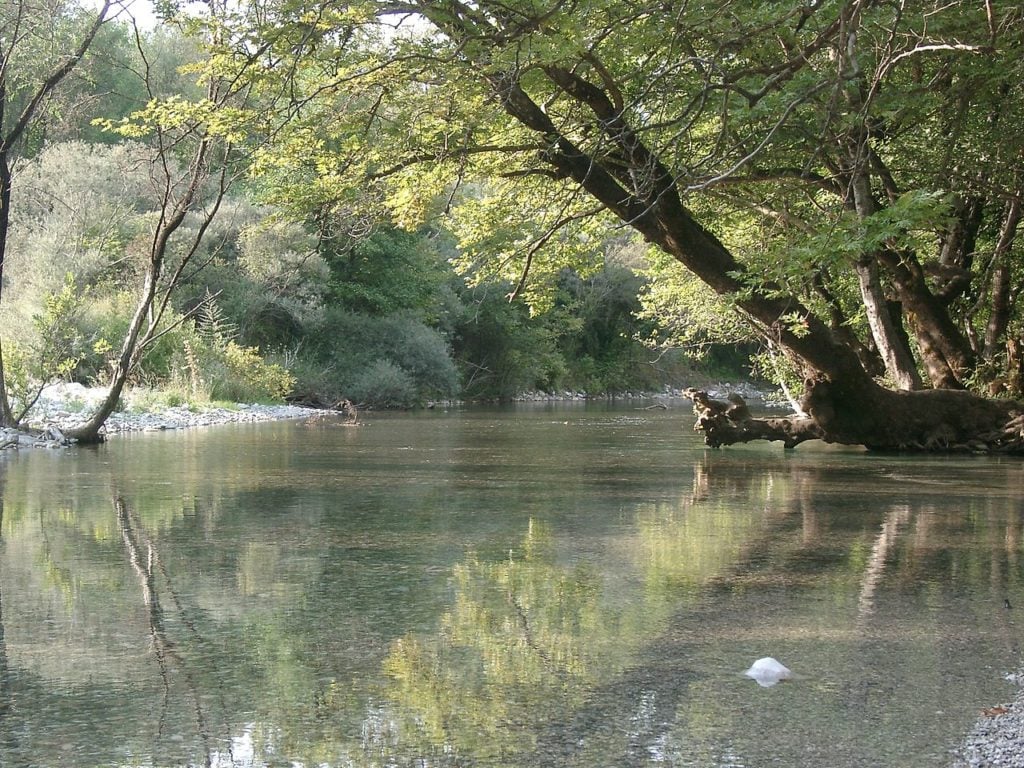
History of Papingo
Like the rest of Epirus, Papingo has a very rich history. It is first mentioned in 1325 by Byzantine emperor Andronikos III Palaiologos.
The village enjoyed a long period of prosperity from the 15th to the 17th centuries due to the special privileges that the region of Zagori had secured from the Ottoman Sultan.
The special privileges allowed for the building of a school and a library in the 18th century.
The village’s prosperity ended in the 19th century when the village’s administrative privileges were withdrawn, after Epirus was taken over by Ismael Pasha.
A demographic decline ensued that continued through the 20th century, even after the union of Epirus with Greece after the Balkan Wars in 1913.
There has been a small increase in the population of the two villages in recent decades, after they became a tourist attraction.
